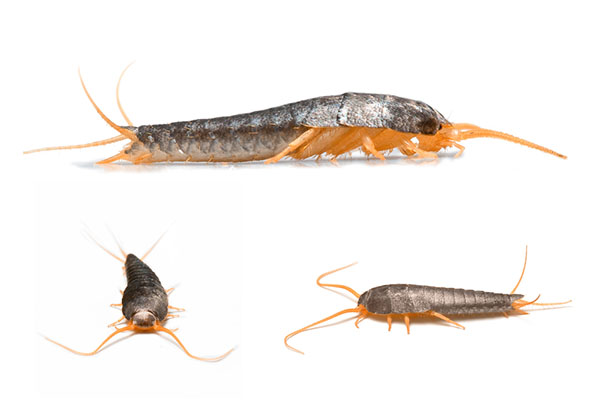Silverfish
Clean, Fast, Discreet & Cost-effective

What are they?
Silverfish, Lepisma saccharinum, is a small, wingless insect, part of an order called Zygentoma of which there are 550 known species.
The name Silverfish derives from the insect’s silvery light grey colour, combined with the fish-like appearance of its movements.
When they are fully grown that are a cigar-shaped, silver-grey, wingless insect about 12mm long. They are agile and can move quickly and have three long bristles at the tail end
Where can you find them?
Why do they cause problems?
Silverfish can become a serious pest problem as they consume a wide variety of food, materials, household items, and clothing. Once Silverfish are discovered, even just one, you can be assured that there are many more and it is advisable to have the infestation treated as soon as possible.
Silverfish will feed on almost anything but prefer to feed on residues of starchy substances such as glues, wallpaper paste and carbohydrate food debris.
How do you treat the problem?
Good sanitation of the area reduces the chance of a silverfish infestation, try to reduce clutter and keep surfaces including your floor surfaces dry and cleaned regularly, securing food storage is also critical. Silverfish are incredible foragers, surviving in seemingly impenetrable spaces, clean, well proofed areas can protect your home. To treat a Silverfish issue: all potential hiding places must be eliminated so a comprehensive investigation of the area is required, your expert technicians who give you all-inclusive guidance on how to protect your home from recurrence and will also conduct a comprehensive riddance program.
